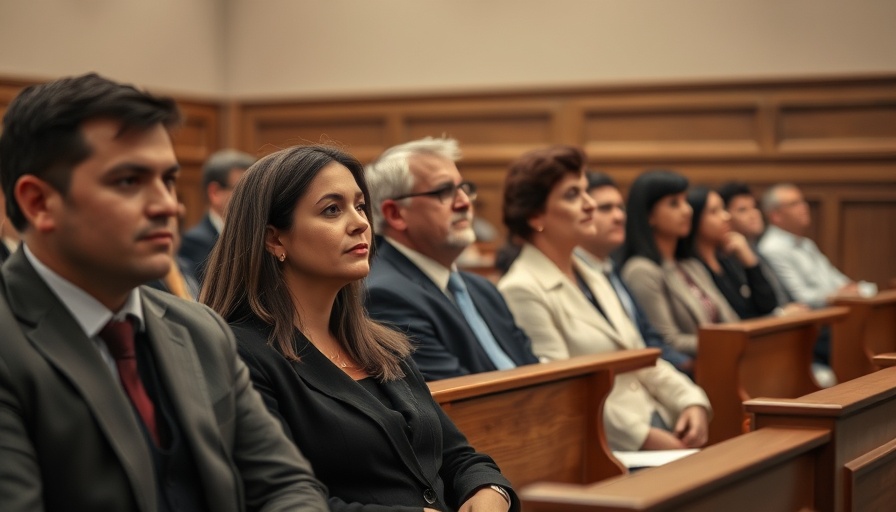
Unveiling Patterns: The Young Dolph Case Trial Progresses
The trial surrounding the tragic murder of rapper Young Dolph has captivated the attention of many, shedding light on the grim realities of violence that resonate within our communities. As the trial reaches its third day, significant revelations are emerging about the alleged mastermind behind this high-profile case. The trial is not merely a courtroom event; it's an essential conversation starter about crime and its lasting impact on our neighborhoods.
Why This Case Matters to the Mid-South Community
For homeowners in the Mid-South, this trial transcends celebrity gossip. It serves as a stark reminder of the environment many residents navigate daily. Living in a community affected by such violent crime can lead to feelings of insecurity and fear. Understanding the underlying details of this trial encourages local residents to engage in discussions about personal safety, community vigilante efforts, and the systemic issues that lead to such tragic incidents.
Diving Deeper: What Do We Know So Far?
Throughout the trial, various testimonies have painted a complex picture of the events leading up to Young Dolph's murder. Key witnesses have begun to come forward, but they also reveal the intricate web connecting individuals involved in the rapper’s life and death. These testimonies draw attention not only to the tragic loss of a beloved artist but also to the systemic issues of gang violence and the ramifications it has on families and neighborhoods.
Witness accounts suggest that the alleged mastermind, whose actions were pivotal to this crime, had deep connections within the local community. This highlights an essential point: criminal behavior does not exist in a vacuum; it reverberates through families and friends, ultimately impacting the very fabric of our neighborhoods.
The Emotional Toll of Violence: A Community Concern
As the trial unfolds, its emotional impact is felt throughout the Mid-South. Community members express feelings of grief, loss, and anxiety surrounding the ongoing violence that has claimed lives and disrupted the peace in local neighborhoods. This emotional toll underscores the necessity for community-based initiatives focusing on mental health and wellness, as residents grapple with the consequences of such violence on their emotional health.
What Lies Ahead? Predictions and Implications
With further court sessions scheduled, it's crucial to consider how this trial may shape future attitudes toward crime in the Mid-South. Depending on the outcome, there may be increased calls for heightened community safety measures or renewed discussions about law enforcement practices. Residents may find themselves considering how they fit into the narrative of community safety and support, influencing everything from neighborhood watch programs to local advocacy efforts.
A Call for Action: Building Stronger Communities
In light of the ongoing trial, there arises an opportunity for homeowners in the Mid-South to engage actively with their community. This can manifest through joining local organizations aimed at combatting crime, participating in community meetings, or supporting programs that foster youth engagement and mentorship. By acting collectively, residents can work to curtail the cycle of violence and promote healthier, safer environments.
Connecting with Local Experts
It’s also vital for residents to connect with local experts and services that can provide guidance on issues related to safety and wellness. Whether seeking advice on home security systems or mental health resources, being informed is key to maintaining a sense of comfort in our homes.
Final Thoughts: Why Your Voice Matters
As individuals and a community, it’s essential to reflect on the ongoing developments of the Young Dolph trial and what they signify about our society. This case has sparked essential dialogues that affect everyone in the Mid-South. The actions we take today, whether in discussions or community efforts, can pave the way for a safer future.
Though the trial brings painful memories and realities into focus, it also serves as a rallying point for the community to come together and address the ongoing challenges posed by violence. Embrace your role in this narrative, whether by voicing concerns, supporting local initiatives, or participating in community resilience efforts.
 Add Row
Add Row  Add
Add 



Write A Comment